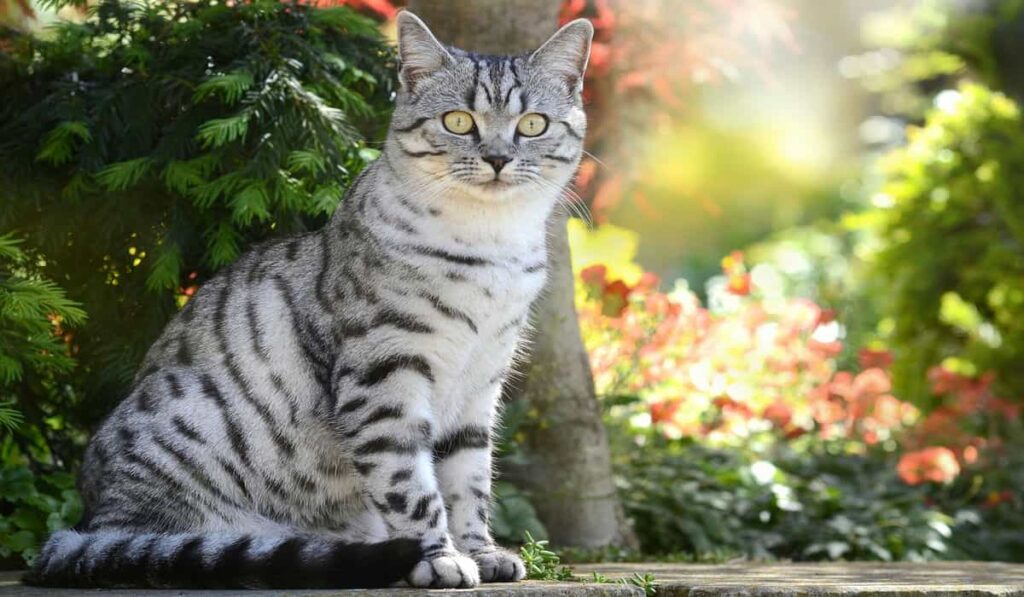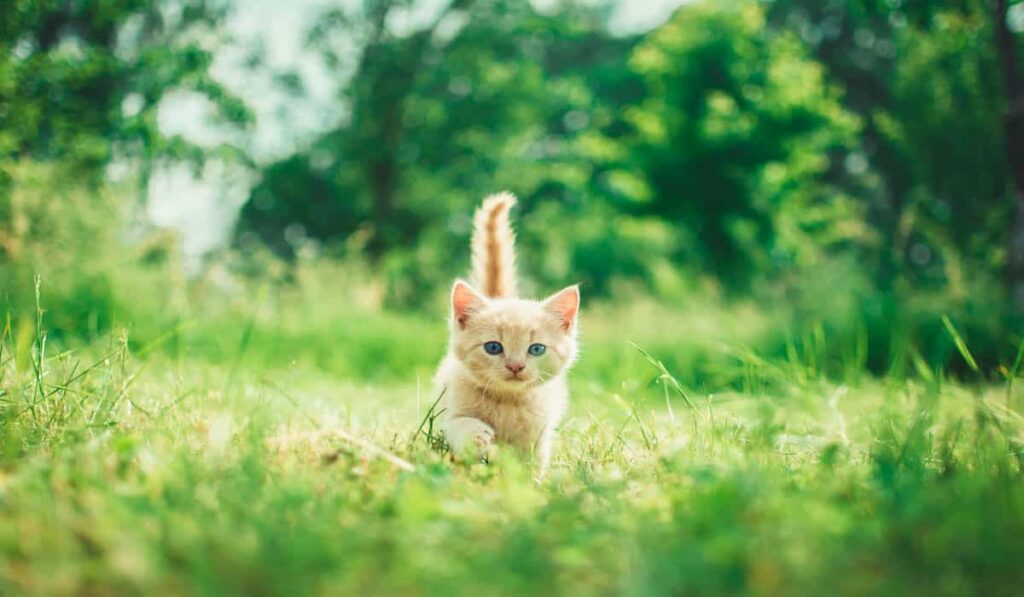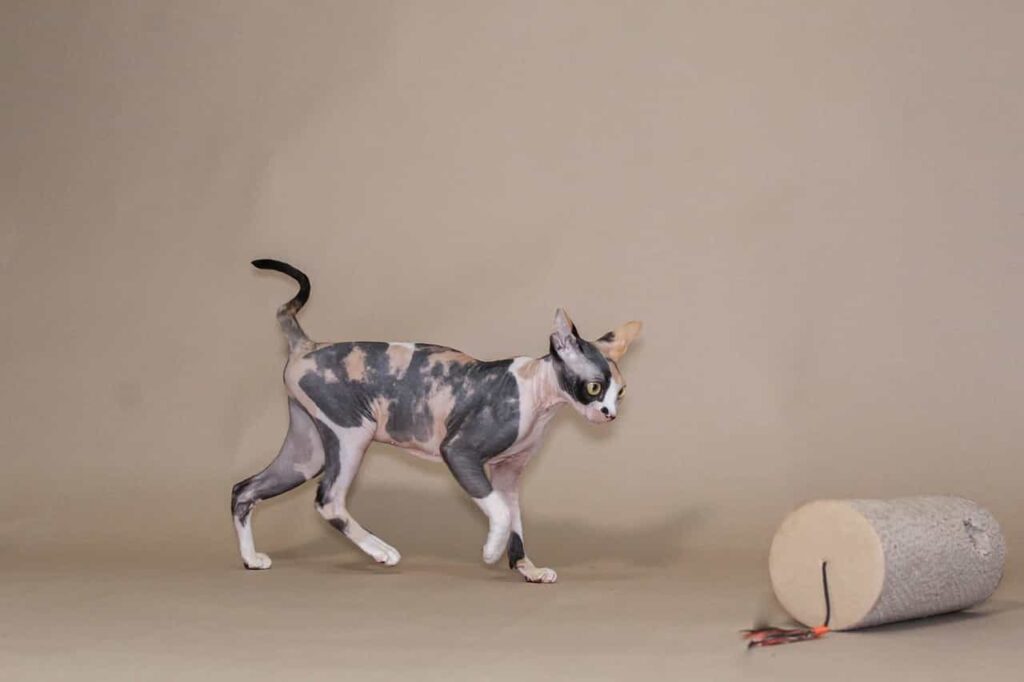Embark on an enchanting journey into the world of the Siberian Cat breed, a majestic and mysterious feline that captivates with its luxurious coat and warm personality. These cats, renowned for their robust health and striking physical characteristics, are more than just pets; they are companions with a rich history and unique traits. Delve into the essence of Siberian Cats as we explore their grooming requirements, distinctive temperament, and the intricacies of their care.
From the playful activities that keep them agile to the careful considerations in their diet, each aspect of Siberian Cat care is a testament to their allure. Whether you’re a seasoned Siberian Cat owner or just beginning to discover this magnificent breed, this guide will provide a deeper understanding and appreciation for these splendid creatures, known for their adaptability to both indoor environments and the harsh winters they originally thrived in.
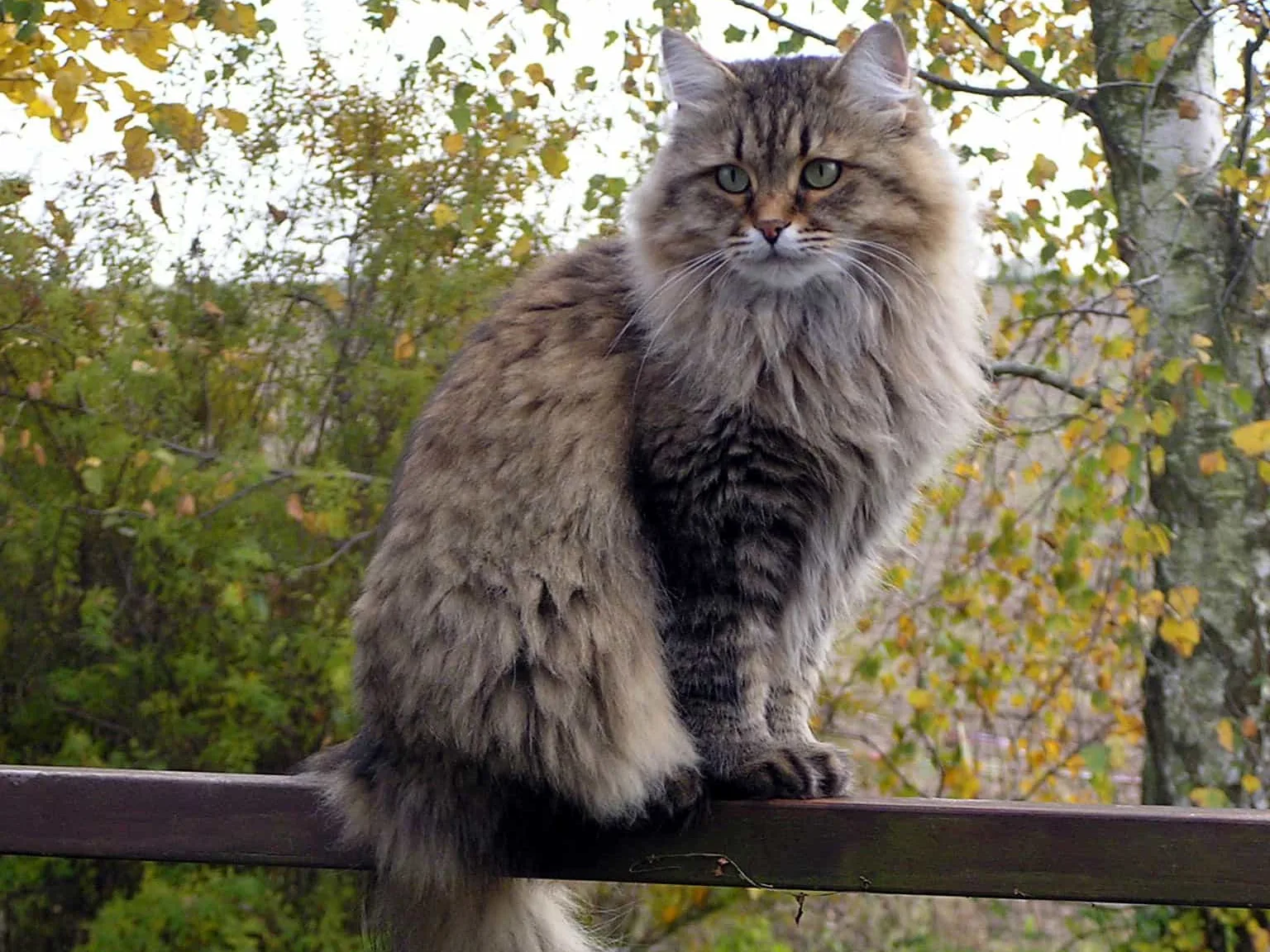

Table of contents
siberian cat breed
The Siberian cat has many other names. Its former name was Siberian Forest cat or Russian Forest cat. The century-old landrace has semi-long to long coats to save itself from the extreme cold of Siberia and Russia.
The breed was typically named Siberian or Siberian cats. It has similarities with the Norwegian Forest breed. Medium to large-sized Siberian cats are adorable to the Russian and Siberian people for centuries but was officially recognized in the late 1980s.
Its other official name is Moscow Semi-long hair and the colorpoint variation is called Neva Masquerade. Some cat associations consider Neva as a separate breed including Federation Internationale Feline (FIFE).
Moving Forward, the breed is an ancient cat breed that is believed to be the ancestor of most of the longhaired cat breeds. The Siberian cat is a natural cat breed of Siberia and the national cat of Russia. Since it has become a landrace it is bred and has become a pedigree in 7 major cat registries all over the world.
specialty of Siberian cat Breed
Other names:
Russian Forest cat, Siberian Forest cat, Landrace, Moscow semi-long hair, and Neva Masquerade.
Personality and characteristics:
Breathtaking, affectionate, intelligent, lovable, adorable, friendly, curious, loyal, sweet, agile, active, playful, and adaptable to extreme conditions.
Body length:
17-25 inches
Body weight:
Males are usually up to 20 pounds but some neutered males are 25 pounds and females are up to 15 pounds.
Coat length:
Semi-long to long
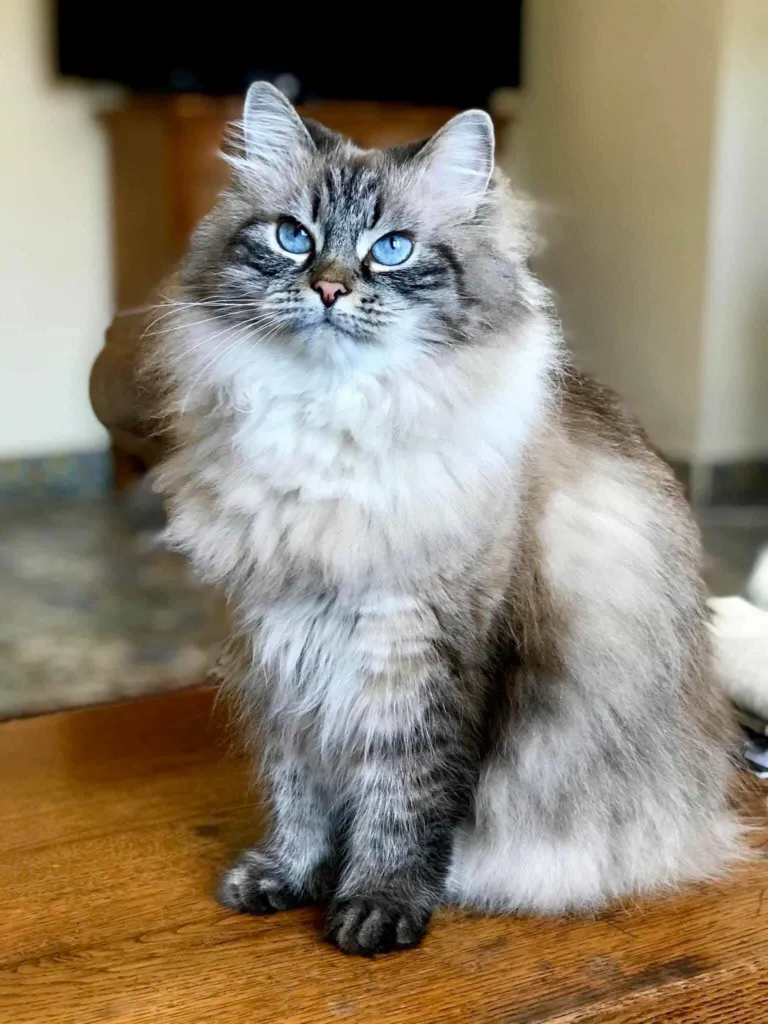

Coat colors:
Any color can be seen in Siberian cats but some registries do not recognize Chocolate, Cinnamon, lilac, and Fawn as Siberian cat’s coat colors. A rare golden color coat caused by the Corn- gene called Sunshine and the Bimetallic variety of Silver Sunshine is also permitted in Siberian cat’s coat colors.
Coat patterns:
The most common coat pattern is Brown Mackerel Tabby and other Tabbies, Tortoiseshell, and color points are also found in Siberian cats.
Eye colors:
All colors are accepted.
Relationship to children and other pets:
Very friendly but if the children and pets are cat friendly.
Grooming requirements:
High maintenance in the Winter and Spring season and the rest of the year low grooming is enough.
Hypoallergenic:
Yes
Shedding:
Moderated
Vocalizing:
Low
Stranger friendly:
Not much
Lifespan:
Generally 15 years but in some cases, it may be up to 18 years.
Origin:
Russia and Siberia
Origin of the breed- Siberian cat
Well, nobody exactly knows from where and when the Siberian cats are hailed. Cats are exiting in Russian fairy tales for more than 1000 years. So, it is imagined that the Siberian cat breed is exiting from 1000 C.E.
However, it came from Russia and the dense forest of Siberia no doubt. There was a book written by Harrison Weir, named ‘ Our Cats and All About Them’ originally published in 1889. In this book, he described the cat breed first. He also organized some cat shows in London and Siberian cats are shown first in 1871.


There is so much confusion about Siberian cats in Russian cat fancies because each cat is different from one another. Every club recognized theri own cat breeds. So, when Siberian cats made their way abroad it was very difficult to recognize them because there so many varieties are been from Russia. However, there was the earliest written breed of Siberian cats recognized by the Kotofel Cat Club in St. Petersburg in 1987.
The breed reached the USA in 1990, after the cold war of 1989. They fell in love with Siberian cats at first sight and recognized them as a separate breed instantly and the UK recognized it in 2002. Nowadays, Siberian cats have recognition from 7 cat associations including The Cat Fancier’s Association (CFA) and The International Cat Association (TICA).
The appearance of the Siberian cat breed
Well, the medium to large-sized and semi-long to longhaired were born to adjust to the icy and extremely cold Siberian forest area and also Russia. These 3 natural types of Feline fur are saying. The types are Guide hair, Awn hair, and Down hair. The guard hair is a winter coat that saves the breed from the harsh weather of Siberia and getting wet by water or something else.
The overcoats melt at the end of the Winter and at the beginning of the Spring. You’ll notice that the furs of their belly area are wavy.Their undercoats are less-dense and shorter in the summer. their neck is covered with pretty-rough furs.The Siberians are powerfully built and agile jumpers with strong hindquarters and large-well-rounded paws. Their tails are bushy and slightly shorter than their torso length. It carried with pride.
Their bodies are medium to large in length and size. All cats are not the same in size. The Siberians have stockier and more muscular, and heavier bodies, medium-sized and lynx-tipped ears, firm and barrel-shaped torsos, and almost round and big eyes with sweet expressions and can be any color.Their backside is curved because of their curved hindlegs.
Their coats can have any color but some registries do not recognize Chocolate, Cinnamon, lilac, and Fawn as Siberian cat’s coat colors. A rare golden color coat caused by the Corn- gene called Sunshine and the Bimetallic variety of Silver Sunshine is also permitted in Siberian cat’s coat colors.
The Mackerel Tabby is the most common coat pattern with other tabbies, Tortiosesell, and color points.
Temperament and nature of the Siberian cat
The Siberian will become your best friend, confidence, problem-solver, and house clown. Siberian cats long for companionship and want to be near their owners. They will come to the door to greet you and tell you about their day. They’ll do this in quiet and melodic ways, using sweet meows, trills, chirps, and lots of purring.
They’re devoted, and loyal companions but not clingy. Sibrians will follow you from room to room but wait patiently until you have time to cuddle. Some of them love to sit on your lap while others will lay happily near you. You may have noticed that your Russian forests choose to sit on you during the Winter season but most of them love to be groomed. They’re affectionate but don’t expect much love from a teenager or childrens, or kittens.
They become more loving as they grow up and the growing up starts at the age of 2. They love to find and bring something back that is hidden, fetched, and thrown. It is their fav playing. They love to play with many toys and but balls and feathered toys are a must for them. Siberians tend to be intrigued by a moving cursor on the computer screens.
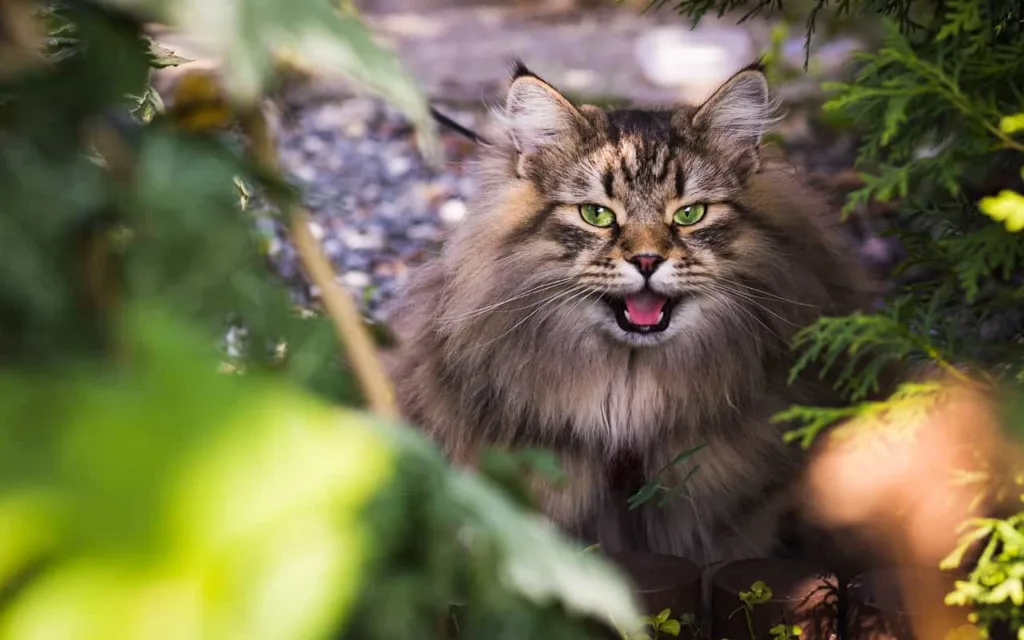

Siberian cat Nature
As such, they probably enjoy playing cat games on tablets. This also means you have a loyal buddy whenever you work on your computer. Your Siberian will be quite happy and delighted to sit near you, periodically extending a paw of support. Others will insist on adding illegible words to your most crucial documents but if you share your home with a Siberian then you’ll never be alone.
They‘ll watch TV with you, go to the restroom with you, and at the end go to the bed with you. They insist on taking part in activities. Reading a newspaper, a book, or a magazine is near impossible without your Siberian.The breed is also extremely curious and a little thief. If they like something, they play with it until they lose it. Siberians enjoy the company of dogs, childrens, and other animals. They’re fearless and easygoing.
Many parents state their Siberians to sleep at their children’s feet, just like a trustworthy guardian. They don’t mind noises or strangers as much as most cats. Siberians have a high level of intuition and know something is off.
They like to spend more time with their family members than they need. The acrobatic nature of the Russian forest cats is well-known among the owners. They’ll play hard, often executing amazing jumps in pursuit of a feathered toy. Some balance on clothing racks and seem to defy gravity! They love to have tall cat trees and tall shelves that they can conquer.
They’re incredibly playful and retain it throughout their lives. The breed can’t be left alone for long periods of time. If you’re doing a full-time job then you better keep 2 Siberians together.
siberian cat breed Caring and grooming
The Siberians are an exceptionally playful and intelligent breed. They love to climb, run, and play. So, you must provide us with the balls and feathered toys. They also need tall cat trees and climbing shelves as once they were the dwellers of the Siberian forest.
Keep their litter box clean as the breed is very sensitive about the little box’s hygiene. Keep your Siberian as much as possible in the Winter as they have a long coat so that it can’t be dirty. You know that cleaning a dirty overcoat is a mess. Besides, your Siberian is a coveted cat. It can be stolen or get injured.


Siberian cat Grooming
An adult Siberian need to be combed several times a week and bathed once every 6 months. You also have to check their coats for matted hair. Their ears must be regularly examined and cleaned as needed. Clean their ears with cotton or cloths.
Never use a cotton bud in the ear of your Siberian. If you see any rashes or excessive debris or dirt in the ear then take it to the vet for a professional cleaning.
For the most part, they don’t shed much; instead, they melt twice a year. When Siberian molts, their hairs will start to the mat and then shed in large clumps. You should groom them daily as this happens. There are always exceptions and some sheds constantly.
Dry air, during Winter, can also make them mat because the Sliva makes the fur wet. In dry air, this can cause matting as it dries. Most matting will occur behind the airs, under the front legs, and near the private parts. If your Siberian gets matted hair, it’s essential to detangle it. Matted hair cuts off the cat’s circulation. It is also painful as the mat pulls the skin.
The Siberian breed’s luxurious, thick, and full coats can come in any color or pattern. They can be marked or non-marked. They also have 3 layered coats- shorter and downy undercoats, Awn hair in the middle- which is middle in length, and an over or Winter coat-which is long. It is also called the guard hair- which protects from the extreme cold of Siberia.
In the Summer, you need to brush their coats once a week.
You need to brush your teeth daily as oral health is important for every cat. So, brush their teeth regularly and also trim their nails after every 15 days gap.
Health and problems of the Siberian cat breed
The Siberian breed is generally a healthy breed. They don’t have any breed-related issues. There is just one common health issue that can disturb their acrobatic lives and this is Hypertrophic Cardio Myopathy (HCM). it is one kind of heart disease. When the heart walls get thickened and the blood generation and circulation are disrupted, it is called HCM.
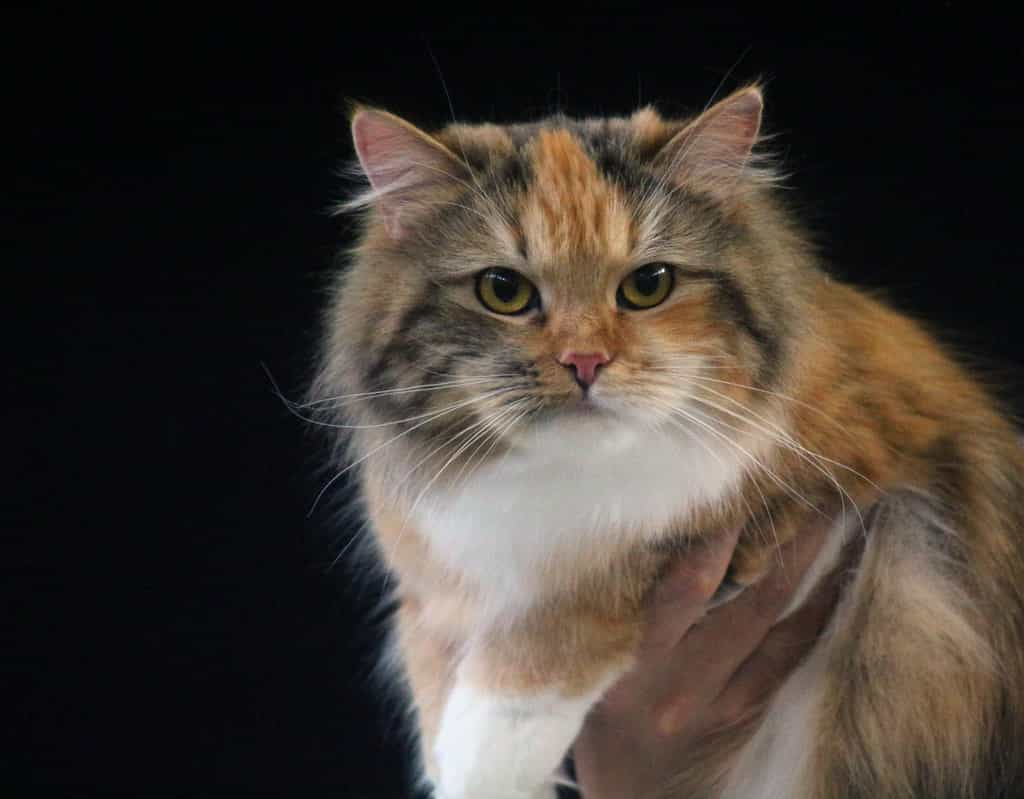

Is the Siberian cat breed Hypoallergenic?
You already know that Siberian cats have long, thick, and dense coats. They also have 3 layers. Inspire of these some people consider Siberians as hypoallergenic. The hairs of Siberians turn out, there are dangers and Saliva in their coats. There is no scientific proof that cat furs create allergies.
There is a protein, called Fel D1, found in a cat’s skin cells. They can be Saliva, danders, dried remnants, and Urines. But the Siberains and some other cat breeds produce fewer danders. So, the Siberian breed isn’t a hypoallergenic breed but all people are not the same. If you have problems with danders or Fel D1 protein then consult a vet or the related before you adopt a Siberian.
Food and nutrition tips for the Siberian Cat breed
Well, you can provide your Siberian with commercially canned food because commercial food contains extra moisture which is very helpful for their Kidney health.Always maintain a feeding schedule and a measurement cup to feed them properly. Don’t leave free food all day long.


How to identify a Siberian cat?
You need to study a lot if you want to identify anything in this world. You can search on the internet and read magazines and journals to gather knowledge about anything. I would like to give you some tips that how can you identify a Siberian cat.
Identifying Siberian cat by their physical appearance
- Feel and check the 3 layered dense coats. The guard coat, Awn coat, and undercoat. The coats are silky, smooth, and lavish.
- Their size is very significant. Their length is for males up to 25 inches and females up to 15 inches. The weight is for males up to 20 pounds and can be 25 pounds if get neutered and females can be up to 15 pounds.
- Their eyes are almost round and big. Any color is accepted but Blue and Green’s colors are more common.
- Their ears are rounded and hairs are on the lynx tip and inside the ears. Their ears are not so big according to the head size.
- Feel their muscular, strong, and stockier bodies. Their paws are large and wide. Some cats don’t like their paws to be touched. If your cat does not like it then examine it with your eyes.
Identifying Siberian cat by nature
- The Siberians are very fond of water. If your cat doesn’t like water then it is not a Siberian for sure.
- Your Russian Forest cat must be very active, playful, and energetic.
- The breed is brave and fearless. They don’t get bothered by noise and strangers. So, if your cat is like this then it can be a Siberian.
- The Siberian cats are very fond of sitting on their owner’s lap and cuddling. They even follow you from room to room and wait until you’ll get free and take them to cuddle up.
Go for a DNA test and also take the cat to the vet.
The comparison in size between Siberian cat and other cat
| Cat breed | Body length | Body weight |
| Siberian catSavannah cat | 17-25 inches36 Inches | 20 pounds 18-40 LBS |
| Peterbald cat | 17 Inches | 14 Pounds |
| Siamese cat | ||
| British Shorthair | 22-25 Inches | 7-17 Pounds |
| Russian Blue | 24 Inches | 12 Pounds |
| Ragdoll cats | 17-21 Inches | Males- 20 LBSFemales- 15 LBS |
| Maine Coon cats | 19-30 Inches | Males-20 pounds |
| Norwegian Forest cat | 36 inches | 20 Pounds |
| Bengal cat | 18 Inches | 12 Pounds |
Siberian cat breed- Eye and coat colors and patterns
The Siberian cat breed has a vast range of coat colors and patterns. They can come in any color but there are some very common coat colors that they appear more:
- Black Siberian cat
- White Siberian cat
- Grey Siberian cat
- Orange Siberian cat
- Blue Siberian cat
- Silver Siberian cat
- Brown Siberian cat
- Red Siberian cat
- Golden Siberian cats with beautiful Black markings.
Coat patterns:
- Tabay-coated Siberians can come in any color except for Pointed, Himalayan, and Black.
- Seal-point-pattered Siberian cat
- Tortoiseshell patterned Siberian cats.
- Mackerel-Tabby Siberian cat
Bi-colored kittens:
Kittens can be born with Black, White, Tabby, Calico, and Bi-color.
Eye colors:
Siberian kittens are born with Green and Blue colors but as they grow up their eye colors can be any color.
Breed overview of the Siberian cats:
Well, a very beautiful cat breed is the Siberian cat breed. It seems that it has come from the Russian fairytales more than 1000 years ago. Nobody knows that actually when and from where the Siberian cats came to Russia and Siberia.
The breed is Russia’s national cat. It has 3 layered long, dense, silky, and luxurious coats. It is a medium to large-sized cat breed and is created to adapt to the harsh and extreme cold of Russia and Siberia.
They can come in coat and eye colors and the coat patterns have also a variety. Their length is up to 20 inches and their weight is up to 20 pounds. They are a natural breed of Siberia, not a crossbreed.
Siberian cat rehoming in the United Kingdom:
well, if you are a resident of the UK and willing to adopt a Siberian cat then you can search the websites of freeads.co.uk, gokitty.com, pet-net.net, and siberian.rescue.me.org.
Siberian Cat Breed Training and Exercise
Training and exercise are crucial for the well-being and happiness of Siberian Cats, a breed known for its playful and intelligent nature. Despite their laid-back personality, Siberian Cats benefit greatly from mental stimulation and physical activity. Engaging them in training routines not only enhances their cognitive skills but also strengthens the bond between cat and owner. Training Siberian Cat kittens, especially, can be a rewarding experience as they are often eager to learn and please. Utilizing positive reinforcement techniques, such as treats and praises, is effective in teaching them basic commands and house rules.
Exercise is equally important for Siberian Cats. Their robust build and energetic temperament call for regular play sessions. Incorporating playful activities for Siberian Cats, like interactive toys, puzzle games, and chase exercises, can keep them physically fit and mentally sharp. These activities cater to their natural instincts and prevent boredom. Given their Siberian Cat physical characteristics, they particularly enjoy climbing and exploring, so providing cat trees and safe outdoor access, if possible, can significantly enhance their quality of life.
However, it’s important to tailor their exercise routine to their individual health status, considering any health issues in Siberian Cats. Regular veterinary check-ups can provide guidance on the appropriate level of physical activity, especially as they age. Consistent training and exercise routines ensure that Siberian Cats not only maintain a healthy weight but also live a stimulating and joyful life.
Siberian Cat Breed Physical Characteristics
The physical characteristics of the Siberian Cat breed are a remarkable blend of beauty, strength, and adaptability. These cats are distinguished by their luxurious, long, and water-resistant coats, which are a direct adaptation to their origins in the harsh climates of Siberia. Their coat, which requires regular grooming to maintain its luster and prevent matting, comes in a variety of colors and patterns, adding to their visual allure. The grooming needs of Siberian Cats, while significant, are a delightful ritual that strengthens the bond between the cat and its owner.
Siberian Cats are medium to large in size, with a strong and muscular build that reflects their agility and physical prowess. Their body is complemented by powerful hind legs and large, round paws that help them navigate snowy landscapes. Another notable feature is their expressive, almond-shaped eyes, which range in color and add to their captivating presence.
Their physical characteristics are not just for show; they contribute to the Siberian Cat’s health and longevity. Despite their robust appearance, it’s important to monitor their diet and exercise to prevent common health issues such as obesity. This breed’s dense coat also makes them a popular choice for individuals with allergies, as they are known to produce lower levels of the common allergen, Fel d 1. Understanding and appreciating the physical characteristics of Siberian Cats is essential for providing them with care that meets their specific needs and enhances their well-being.
Siberian Cat Breed Lifespan and Aging
The Siberian Cat, renowned for its robust health and hearty nature, typically enjoys a long lifespan, often reaching into their late teens or even early twenties with proper care. This longevity is a testament to the breed’s strong genetic makeup and origins. Understanding the aging process in Siberian Cats is crucial for providing them with a quality life in their senior years.
As Siberian Cats age, their dietary needs may change. It’s important to adapt their diet to support their metabolism and maintain a healthy weight. Senior Siberian Cats might require food that is easier to digest and lower in calories but still rich in essential nutrients. Regular veterinary check-ups become increasingly vital to monitor and manage any emerging health issues common in older cats, such as kidney problems, arthritis, or dental issues.
Caring for an aging Siberian Cat also involves adapting their environment to their changing needs. This might include providing easier access to their favorite spots, ensuring they have a comfortable place to rest, and modifying their exercise routine to suit their energy levels and physical capabilities. Gentle grooming becomes increasingly important to help manage their coat, which can become more difficult for them to maintain themselves.
Throughout their lifespan, maintaining a strong bond through affection and attention remains important. As they age, they may seek more comfort and reassurance from their owners. By understanding and catering to the needs of aging Siberian Cats, owners can ensure their feline companions enjoy their golden years with dignity and comfort.
Siberian Cat Breed Adoption Guide
Adopting a Siberian Cat can be a fulfilling experience, offering the joy of companionship with one of the most majestic cat breeds. When considering adopting a Siberian Cat, it’s essential to understand their specific needs and characteristics to ensure a compatible match. Prospective owners should begin by researching reputable breeders or adoption centers specializing in Siberian Cats. These sources should provide detailed information on the cat’s health history, temperament, and Siberian Cat breed origins.
During the adoption process, inquire about the grooming requirements and any known health issues in Siberian Cats. It’s also crucial to understand their dietary needs and temperament to assess if the breed aligns with your lifestyle. If adopting a kitten, ask about the care taken in raising Siberian Cat kittens, including their early socialization and training.
Once you decide to adopt, prepare your home to welcome the new member. This includes creating a safe and comfortable environment, with access to play areas, scratching posts, and a quiet place for rest. After bringing your Siberian Cat home, allow them time to acclimate to their new surroundings, gradually introducing them to different areas of the house and other areas.
Siberian Cat Breed Socialization
Socialization is an integral aspect of caring for a Siberian Cat, greatly influencing their temperament and adaptability. Known for their friendly and outgoing nature, Siberian Cats typically respond well to socialization, which should ideally begin at a young age. Exposing Siberian Cat kittens to a variety of experiences, such as meeting different people, encountering other pets, and exploring new environments, helps develop their confidence and social skills.
Effective socialization involves gradual exposure to various stimuli while ensuring the experiences are positive and non-threatening. Encouraging playful activities for Siberian Cats not only aids in socialization but also promotes mental and physical well-being. It’s important to remember that each cat is unique, and their socialization needs may vary. Some Siberian Cats may be more reserved or independent, requiring more patience and gentle encouragement during socialization.
Incorporating regular social interactions into the Siberian Cat’s routine enhances their quality of life. It allows them to exhibit their natural curiosity and sociability, leading to a well-adjusted and contented cat. Socializing your Siberian Cat also includes familiarizing them with routine handling, such as grooming, which is vital given their coat care needs. With consistent and thoughtful socialization, Siberian Cats can develop into affectionate and well-rounded companions, capable of forming deep bonds with their human families and adapting seamlessly to various social situations.
Siberian Cat Breed Maintenance and Safety Guide
Maintaining a Siberian Cat involves a holistic approach that encompasses their physical health, grooming, diet, and safety in the home environment. Given their luxurious long fur, one of the key Siberian Cat grooming requirements is regular brushing to prevent matting and reduce shedding. This not only keeps their coat in good condition but also provides an opportunity to check for skin issues or parasites.
When it comes to diet, Siberian Cats require balanced nutrition that supports their robust physique and energy levels. Adhering to appropriate feeding guidelines for Siberian Cats, which often include a combination of high-quality dry and wet food, is crucial for their overall health. Regular veterinary check-ups are essential to monitor and address any health issues in Siberian Cats, including those common to the breed such as heart conditions or kidney issues.
Safety in the home is another vital aspect of Siberian Cat care. As curious and agile creatures, they should have a safe environment to explore. This includes securing potential hazards like toxic plants, ensuring windows and balconies are safe, and providing stimulating toys and climbing structures to keep them entertained. Additionally, considering their thick coat, it’s important to ensure they don’t overheat in warmer environments and have access to cool, shaded areas.
Maintaining a Siberian Cat’s well-being also involves understanding their temperament and personality, providing them with an environment that meets their physical and emotional needs. By adhering to these maintenance and safety guidelines, you can ensure a happy, healthy, and safe life for your Siberian Cat.
Conclusion
In summary, the Siberian Cat breed stands out as a remarkable and majestic feline, known for its luxurious fur, robust health, and affectionate temperament. Owning a Siberian Cat is a rewarding experience that brings warmth and companionship into any home. By understanding and catering to their unique needs—from their specific grooming requirements and dietary needs to their socialization and overall safety—you embark on a fulfilling journey with these magnificent creatures.
The Siberian Cat’s adaptability, friendly nature, and playful disposition make them ideal pets for various households. Whether through the process of training, socializing, or simply sharing daily life, these cats offer a deep and meaningful connection to their owners. Their long lifespan also means a lasting companionship, filled with shared memories and affection.
By providing the right care, attention, and environment, Siberian Cat owners can ensure their feline companions thrive, showcasing the breed’s inherent beauty and charm. Embracing the responsibilities and joys of owning a Siberian Cat is not just about caring for a pet; it’s about welcoming a beloved family member whose presence enriches life in countless ways.

